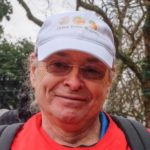Minds of the Movement
An ICNC blog on the people and power of civil resistance
by Tom HastingsJune 28, 2017
Years ago, when U.S. President Ronald Reagan was fixated on Nicaragua, a U.S. general was quoted in a Talk of the Town column in The New Yorker as saying that conditions were so ripe that a U.S. invasion of Nicaragua would be "as easy as rolling off a log."
We protested. Peace people traveled to Nicaragua to volunteer in many capacities. And in 1986, when Reagan was his most vexed and war seemed imminent, we massed in Washington, D.C. I helped Mobilization for Survival with days of nonviolence trainings and went out with a goodly crowd to the mass action meeting at the Lincoln Monument, featuring many speakers, including brilliant stentorian men like William Sloan Coffin.
Finally, a little white-haired woman stepped to the microphone and strained up to its height. Her name was Anne Braden, from Kentucky. She said, "You are about to walk to the White House to get arrested. You are from all across this country. When you go home, people are going to ask you, 'Did you do any good?' and I want you to tell them 'Yes.' And they are going to ask you, 'Do you think the president heard you?' and I want you to tell them 'No, that's not who we were talking to. We were talking to the American people.' That's what we did in the Civil Rights movement and we broke the back of Jim Crow segregation."
And that is the secret of protesting. It is a voice from the people, for the people. And it is people finally understanding that they have power. They need to learn how to help it emerge and how to wield it, but protesting is how they feel it. It is the crucial beginning of what E.P. Thompson called the logical transition from protest to resistance.

Tom Hastings
Tom H. Hastings, long-time ICNC collaborator, is Coördinator of Conflict Resolution BA/BS degree programs and certificates at Portland State University (USA), PeaceVoice Senior Editor and on occasion an expert witness for the defense of civil resisters in court. He has written several books and many articles about nonviolence and other peace and conflict topics. He is a two-time Plowshares resister and a founding member of two Catholic Worker communities.
Read More